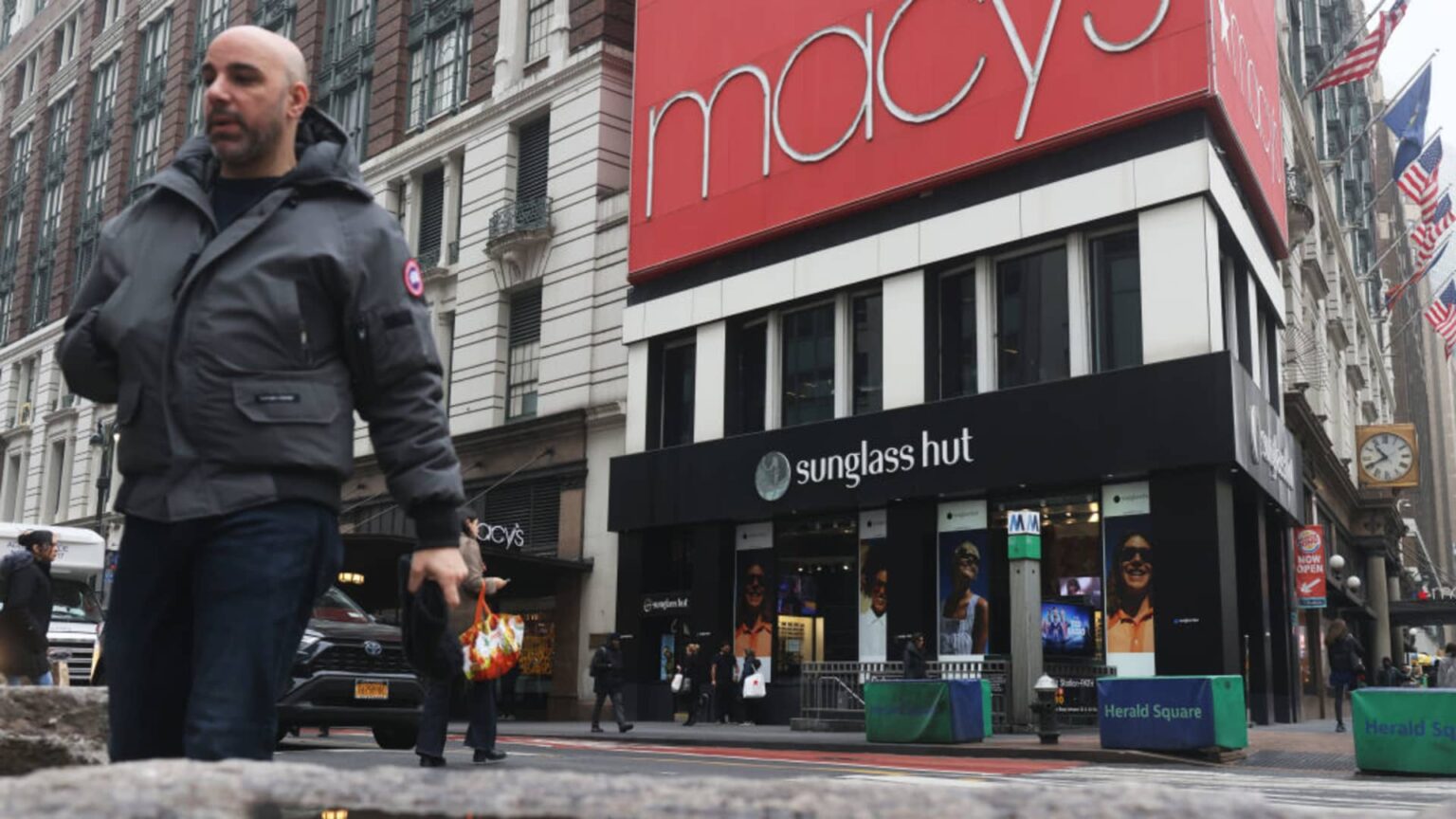Global Courant
Macy’s shares fell Thursday, as the retailer cut its full-year outlook, saying it saw sales weaken significantly in March and slumped even further in April.
Shares of the company fell nearly 3% in morning trading, even though it beat earnings estimates for the fiscal first quarter.
related investment news
Here’s how Macy’s fared for the three-month period ending April 29 compared to what Wall Street expected, based on an analyst survey by Refinitiv:
Earnings per share: 56 cents adjusted versus 45 cents expected Revenue: $4.98 billion versus $5.04 billion expected
The department store operator said it now expects sales of $22.8 billion to $23.2 billion for the year, down from an earlier range of $23.7 billion to $24.2 billion. Macy’s expects owned-plus-licensed comparable sales to fall 6% to 7.5% over the period, worse than previous guidance of a 2% to 4% decline.
For the year, it expects adjusted earnings per share of $2.70 to $3.20 — a big drop from its previous guidance of $3.67 to $4.11 per share.
In an interview with CNBC, CEO Jeff Gennette said the retailer took a conservative stance for the rest of the year after a pullback in the spring. He said the company expects more seasonal product write-downs and plans to reduce goods orders as it prepares for the coming quarters.
Gennette said the high end of the guidance would reflect March and April trends continuing throughout the year, while the low end would mean consumer spending would worsen.
Weaker sales at Macy’s brands, including upmarket Bloomingdale’s and beauty chain Bluemercury, he said.
On the company’s earnings call, Gennette attributed slower sales to headlines about layoffs and the banking crisis. Those factors exacerbated an already difficult economic environment, he said.
Net income for Macy’s in the first quarter was $155 million, or 56 cents per share, compared to $286 million, or 98 cents per share, a year earlier.
Revenue fell about 7% to $4.98 billion from $5.35 billion in the year-ago period. Sales missed analysts’ forecast.
Comparable sales on an owned-plus-license basis fell 7.2% for the quarter, worse than the 4.7% drop expected by analysts polled by Refinitiv.
The Macy’s brand experienced the strongest year-on-year declines. Comparable store sales decreased 7.9% on an ownership plus license basis. At Bloomingdale’s, owned-plus-license comparable store sales declined 4.3%. Bluemercury’s comparable store sales grew 4.3% year over year, but the growth was slower than the double-digit or high-single-digit increases it has posted in other quarters.
Digital sales were also down 8% from the previous year.
Macy joined Nordstrom in reporting mediocre results and predicting tougher times ahead. Macy’s said it will boost sales by investing in private label brands, opening more off-mall stores and growing its luxury business and online marketplace.
Macy’s posted results after brands sold by department stores signaled weaker demand for clothing and accessories in the US. Tapestry, including Coach and Kate Spade, and Capri, including Michael Kors, reported weaker demand in North America. That was exacerbated in part by companies placing more cautious orders while clearing unsold goods.
Dollar General shares also plunged Thursday after the discounter missed earnings estimates and lowered its outlook for the year, citing a challenging economic backdrop.
Gennette said Macy’s sales have been hit as customer budgets are under pressure. About half of Macy’s namesake brand customers have household incomes of $75,000 or less.
“They’re clearly under pressure, and especially in our discretionary categories,” he said.
At Bloomingdale’s, he said, the “prospective customer” who shopped more luxury brands during the Covid pandemic when they had stimulus money has also dropped.
But Gennette said the company saw “signs of life in the month of May” as the weather warmed. He said spring clothing sales were up, especially at Bloomingdale’s. The higher-end department store’s sales are ahead of last May, he said.
Beauty is one of the company’s strongest categories. Some of the popular pandemic items, such as textiles and housewares, are also starting to bounce back.
As Macy’s braces for a potentially tougher year, Gennette said it has a new reason for customers to stop by in the fall and holiday season. From October, Nike will return to its stores and website. Macy’s received its last delivery from Nike in December 2021, as the athletic shoe company cut back on wholesale orders and emphasized direct-to-consumer sales.
Macy’s has sold some Nike footwear through a licensing deal with Finish Line, but it will begin to offer a fuller range, including apparel for women, men and children.
“We’ve taken a break from our partnership and we’re back in it now,” he said.
Shares of Macy’s closed at $13.59 on Wednesday, bringing the company’s market value to $3.69 billion. So far this year, the company’s stock is down 34%. That falls short of the S&P 500’s nearly 9% gain and retail-focused XRT’s roughly 6% loss over the same period.







